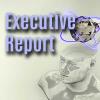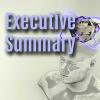Strategic advice to leverage new technologies
Technology is at the heart of nearly every enterprise, enabling new business models and strategies, and serving as the catalyst to industry convergence. Leveraging the right technology can improve business outcomes, providing intelligence and insights that help you make more informed and accurate decisions. From finding patterns in data through data science, to curating relevant insights with data analytics, to the predictive abilities and innumerable applications of AI, to solving challenging business problems with ML, NLP, and knowledge graphs, technology has brought decision-making to a more intelligent level. Keep pace with the technology trends, opportunities, applications, and real-world use cases that will move your organization closer to its transformation and business goals.
Insight
In this Cutter Business Technology Journal (CBTJ), we take a broad look at the opportunities and disruptions that blockchain creates. Our authors explore reasons why blockchain application is still slow regardless of overall interest in the technology. Enterprises are still struggling to find a blockchain that fits their needs, especially from a scaling perspective. A key observation from these articles is that regulation and compliance can help drive blockchain technology adoption. Blockchain (and related use cases such as cryptocurrency and digital assets) is currently subject to very limited regulation. In this issue, the authors provide researchers and practitioners with an overall view of the current state of blockchain adoption and what industry participants perceive as its challenges. They present real-world examples of DLT implementations and demonstrate how this new technology can deliver new value.
Guiding the Adoption of Artificial Intelligence with Business Design
Senior leaders are feeling the push from shareholders to continue driving their organizations forward, but is AI the answer? Just because AI is front-page news, is it right for your organization? Are the implications truly understood? These questions and more are crucial for leaders as the AI evolution continues to shape the next wave of work. Clearly, AI will profoundly transform our lives in the years ahead. Finding the balance between opportunity and implications is key to our success as well as to our future. This Executive Report explores these opportunities and implications, discusses how business design can be a crucial guide for AI, and provides key recommendations for moving into action.
Senior leaders are feeling the push from shareholders to continue driving their organizations forward, but is AI the answer? Just because AI is front-page news, is it right for your organization? Are the implications truly understood? These questions and more are crucial for leaders as the AI evolution continues to shape the next wave of work. Clearly, AI will profoundly transform our lives in the years ahead. Finding the balance between opportunity and implications is key to our success as well as to our future. The accompanying Executive Report explores these opportunities and implications, discusses how business design can be a crucial guide for AI, and provides key recommendations for moving into action.
The expectations end users have of software today are significantly different than those they had just a few years ago. This Advisor examine three implications of these rising expectations.
To realize value in big data, organizations must establish a proper quality function around the unique characteristics of big data.This Advisor explores five strategic considerations in developing a quality environment in a big data initiative.
We have a growing body of evidence that points us to what makes a business architecture team successful. In this Advisor, we share a few characteristics that encapsulate how successful business architecture practitioners think and act.
This Executive Update series examines the extent that organizations are using or planning to use CX practices and technologies, the status of implementing CX management, the establishment of dedicated enterprise CX groups, and the reason such groups oversee CX initiatives. Here in Part VII, we examine some of the advanced technologies organizations are interested in adopting for CX.
This edition of The Cutter Edge explores the social, economic, privacy, and ethical issues associated with AI adoption; how the cognitive enterprise offers a business-driven vision for organizations, and more!


















